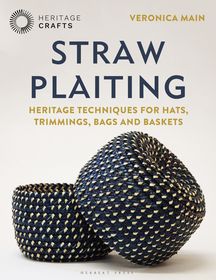
How to Do Your Literature Review
- Publisher's listprice GBP 30.99
-
14 805 Ft (14 100 Ft + 5% VAT)
The price is estimated because at the time of ordering we do not know what conversion rates will apply to HUF / product currency when the book arrives. In case HUF is weaker, the price increases slightly, in case HUF is stronger, the price goes lower slightly.
- Discount 20% (cc. 2 961 Ft off)
- Discounted price 11 844 Ft (11 280 Ft + 5% VAT)
- Discount is valid until: 31 December 2025
Subcribe now and take benefit of a favourable price.
Subscribe
14 805 Ft

Availability
printed on demand
Why don't you give exact delivery time?
Delivery time is estimated on our previous experiences. We give estimations only, because we order from outside Hungary, and the delivery time mainly depends on how quickly the publisher supplies the book. Faster or slower deliveries both happen, but we do our best to supply as quickly as possible.
Product details:
- Edition number 1
- Publisher SAGE Publications Ltd
- Date of Publication 22 November 2024
- ISBN 9781529673036
- Binding Paperback
- No. of pages272 pages
- Size 242x170 mm
- Language English 814
Categories
Short description:
A step-by-step, clear introduction to doing a literature review for beginners (at UG or PG level); written by a world-class textbook author.
MoreLong description:
This book will walk you through every step of crafting an excellent literature review. It will show you where to find sources, how to assess their quality, and how to combine and integrate these sources into the best possible literature review. From scoping the field to searching the literature to synthesising your findings, this book hits all the spots.
Presenting a clear and detailed roadmap to ensure you don’t miss a step, the book includes:
· Advice on the best ways to scan and search the literature.
· All the latest information and advice on using AI tools for searching literature.
· Case studies and real-life examples from a range of disciplines so you can learn from other researchers who have been in your shoes.
· DIY activities so you can practice your skills and get to grips with key concepts.
· Guidance on how to analyse and synthesise the findings from your literature searches.
· Advice and guidance on organising your writing.
For tutors, each chapter is accompanied by a PowerPoint presentation that will map onto a 10 or 11 week module.
Written in Gary’s signature easy-to-read style, this book is an essential companion for anyone conducting a literature review in the applied social sciences.
This text puts literature reviews in simplest and most logical order. The students/researchers who are new to research will find the content structured and easy to follow. The author has addressed complex research elements with relevance to literature reviews, providing a comprehensive guide to support learning, by providing steps which are easy to follow and understand. This book can be utilised with undergraduate or postgraduate learners. The online resources include the power points which provides supports for any research module and academics. There is also reference made to AI applications and how these can be utilised ethically in a way to support the student/researcher experience. I would recommend this text to any novice new to research. More
Table of Contents:
Chapter 1: Starting
Chapter 2: Scanning, skimming, saving and storing
Chapter 3: Sources, quality and criticality
Chapter 4: Scoping
Chapter 5: Searching, screening and selecting
Chapter 6: Structuring a narrative review
Chapter 7: Systematizing
Chapter 8: Strategising: comparing systematic, realist and narrative reviews
Chapter 9: Synthesising: storyline and theory
Chapter 10: Synthesizing and analysing
Chapter 11: Scribing, concluding and stopping







